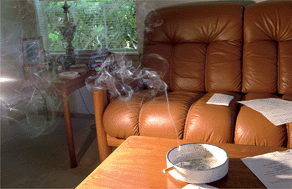Real-time particle monitor calibration factors and PM2.5 emission factors for multiple indoor sources†
Abstract
Indoor sources can greatly contribute to personal exposure to particulate matter less than 2.5 μm in diameter (PM2.5). To accurately assess PM2.5 mass emission factors and concentrations, real-time particle monitors must be calibrated for individual sources. Sixty-six experiments were conducted with a common, real-time laser photometer (TSI SidePak™ Model AM510 Personal Aerosol Monitor) and a filter-based PM2.5 gravimetric sampler to quantify the monitor calibration factors (CFs), and to estimate emission factors for common indoor sources including cigarettes, incense, cooking, candles, and fireplaces. Calibration factors for these indoor sources were all significantly less than the factory-set CF of 1.0, ranging from 0.32 (cigarette smoke) to 0.70 (hamburger). Stick incense had a CF of 0.35, while fireplace emissions ranged from 0.44–0.47. Cooking source CFs ranged from 0.41 (fried bacon) to 0.65–0.70 (fried pork chops, salmon, and hamburger). The CFs of combined sources (e.g., cooking and cigarette emissions mixed) were linear combinations of the CFs of the component sources. The highest PM2.5 emission factors per time period were from burned


 Please wait while we load your content...
Please wait while we load your content...